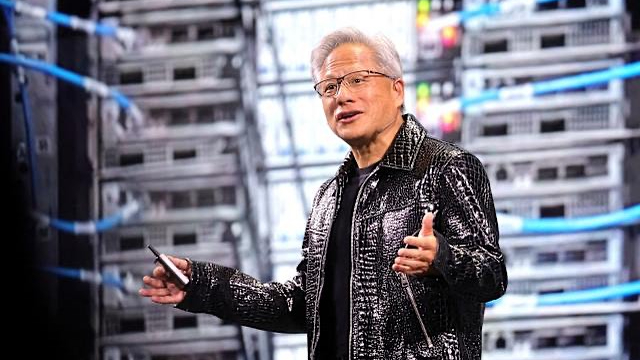Eli Lilly and NVIDIA Join Forces: The AI Supercomputer Revolutionizing Drug Discovery
The New Power Duo in Pharma and Tech
In one of the most groundbreaking partnerships of 2025, pharmaceutical powerhouse Eli Lilly has joined forces with NVIDIA to create one of the world’s most advanced AI supercomputers, designed to transform the future of drug discovery and development. The collaboration marks a pivotal moment where cutting-edge technology meets life-saving science, aiming to accelerate the creation of new medicines by years.
Eli Lilly will utilize more than 1,000 NVIDIA Blackwell Ultra GPUs, powering a next-generation AI infrastructure that could drastically reduce the time and cost of discovering new treatments. This initiative places both companies at the forefront of a digital revolution in healthcare.
Kimberly Powell, NVIDIA’s Vice President of Healthcare, called the move “a defining moment for modern medicine,” adding, “AI factories like this one will soon become the new instruments of science — where molecules are designed, tested, and refined digitally before ever reaching a lab.”
How the Partnership Works
At the heart of this collaboration lies NVIDIA’s DGX SuperPOD architecture, a computing system built for processing colossal data volumes at unprecedented speeds. Eli Lilly’s scientists will leverage this technology to simulate and test billions of potential drug molecules virtually, identifying the most promising candidates for real-world testing.
The system will integrate with Lilly’s TuneLab platform, a hub for AI-enabled drug discovery, offering smaller biotech firms access to Lilly’s powerful machine learning tools while maintaining data privacy. This opens up new pathways for collaboration and innovation across the pharmaceutical landscape.
Why This Partnership Matters
Drug development is notoriously slow and expensive — with the average process taking over a decade and costing upwards of $2 billion. The use of AI supercomputing could shorten this to mere months, enabling researchers to explore far larger chemical spaces than human teams ever could.
Thomas Fuchs, Eli Lilly’s Chief AI Officer, emphasized the potential impact: “This isn’t about replacing scientists; it’s about empowering them. AI can help us understand biology in ways we never thought possible.”
The collaboration also signifies a shift toward AI-driven healthcare ecosystems, where pharmaceutical companies, technology providers, and biotech startups work together in real time to design better drugs — faster, safer, and at lower cost.
The Financial and Strategic Stakes
Although financial terms have not been officially disclosed, industry analysts estimate the project’s initial investment could reach hundreds of millions of dollars. The long-term returns, however, could be exponential.
According to analysis reviewed by CEO Today, the global AI-in-pharma market is projected to exceed $80 billion by 2030, driven by major partnerships like this one. For NVIDIA, the deal solidifies its dominance in the AI infrastructure space, while for Lilly, it could mean a massive leap ahead of its pharmaceutical competitors.
Innovation Meets Responsibility
Despite the excitement, the partnership raises important questions around data governance, intellectual property, and ethical AI use. With vast quantities of sensitive medical and molecular data being processed, ensuring transparency, fairness, and security will be paramount.
Eli Lilly has pledged to operate its AI systems using 100% renewable energy, aligning with its environmental sustainability goals. Moreover, the company has confirmed that its AI-generated insights will remain under the scrutiny of human scientists, ensuring that breakthroughs are validated by traditional research methods.
What It Means for the Future of Medicine
This collaboration could reshape not just how drugs are made, but how diseases are understood and treated. AI’s ability to analyze complex biological data could lead to faster cures for cancer, neurological conditions, and even rare genetic disorders.
For patients, this means shorter waiting times, more personalized treatments, and lower healthcare costs in the long run. For the global biotech sector, it marks the dawn of a new competitive era — where data and computing power become as valuable as patents and pipelines.
Frequently Asked Questions
What is Eli Lilly’s partnership with NVIDIA about?
Eli Lilly is teaming up with NVIDIA to build a powerful AI supercomputer that will accelerate drug discovery by simulating millions of molecular interactions digitally.
How will this technology change drug development?
AI can identify promising drug candidates much faster, cutting research timelines from years to months and reducing costs significantly.
Is AI replacing human scientists?
No. AI acts as a scientific collaborator — enhancing human expertise rather than replacing it, helping researchers make more informed and efficient decisions.
Conclusion
The Eli Lilly–NVIDIA partnership is not just another tech deal — it’s a turning point for modern medicine. As AI continues to evolve, the line between biotechnology and computing will blur further, unlocking innovations that could redefine how we fight disease.
With two industry titans leading the charge, the race to build the world’s smartest “AI factory for medicine” is officially underway — and the future of healthcare has never looked more intelligent.














